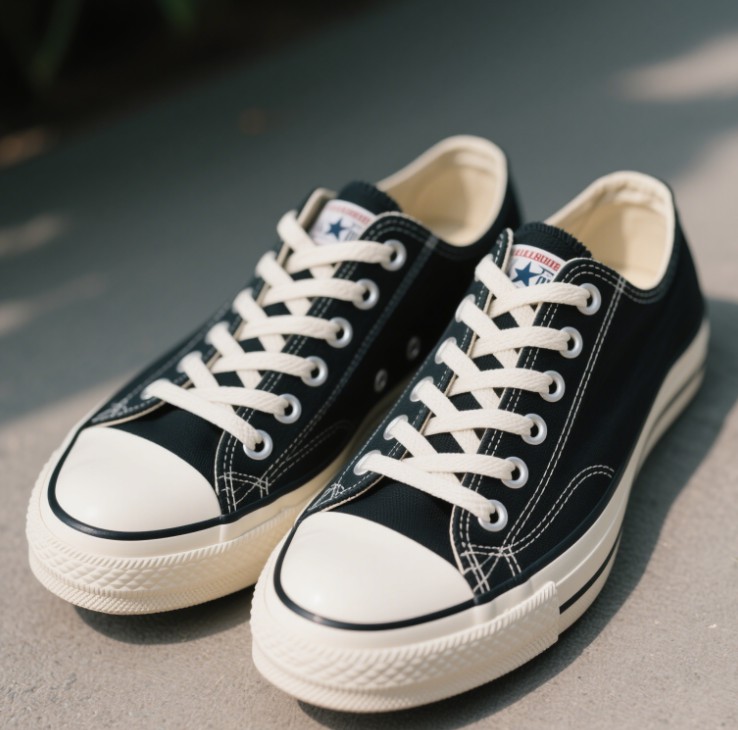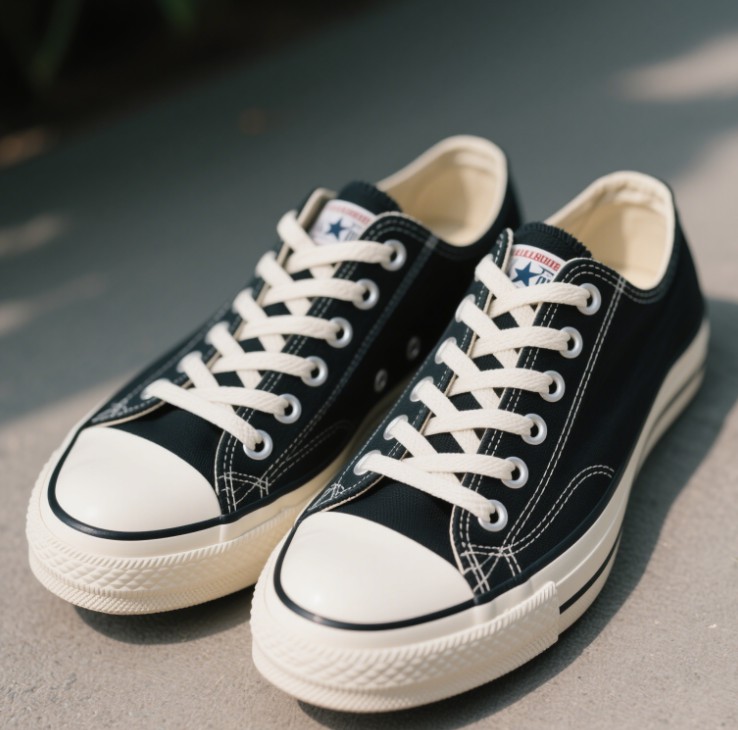It was the winter of 1921 when Charlie first stepped onto the hard wooden floors of the local gym, the polished surface gleaming under the overhead lights. The gym had an unmistakable smell—the scent of freshly mopped floors mingling with the faint odor of sweat and leather. The sound of sneakers squeaking against the floor, the slap of the basketball against the backboard, and the rapid pace of the game all created a symphony of athleticism. But for Charlie, a young basketball player with big dreams, the game felt different that day. The court wasn’t just a place where he played—it was where something revolutionary was about to happen.
Charlie had always loved basketball, but the shoes he wore didn’t seem to love him back. His boots, like those of many players at the time, were heavy and clunky, offering little support for the quick movements and sudden sprints the game demanded. His feet ached after every game, and his movements felt restricted. In fact, most basketball players at the time wore regular leather shoes, with little thought given to the specialized footwear needs of the sport. That is, until one day, when an unexpected innovation began to change the game forever.

It all began with a company called Converse. In 1917, the company had already been making durable rubber-soled shoes, but it was a few years later, in 1921, that Converse introduced something entirely new to the sports world: the Chuck Taylor All-Star. Unlike the heavy leather shoes players had been wearing, these were made of lightweight canvas with a rubber sole—something that would soon be recognized as the first true “basketball shoe.”
Charlie, like many others, was skeptical at first. He had never thought about the importance of footwear in a game of basketball. But when he laced up his first pair of canvas sneakers, he felt a noticeable difference. The shoes were light. They didn’t weigh him down the way his old boots did. They allowed him to move with more agility, more freedom. The canvas upper, combined with the rubber sole, gave him the grip he needed to make quick pivots and sharp turns. The breathability of the canvas kept his feet cool, and the ankle support helped protect him from injuries as he dashed across the court. It was the perfect marriage of function and design.
It didn’t take long for other players to notice Charlie’s new shoes. They saw how much quicker he was, how much more nimble he appeared on the court. Soon, the Chuck Taylor All-Stars became a staple for basketball players, not just for the professional teams but also for high school and college leagues across the country. The shoes were simple yet revolutionary. And they did something that no one had anticipated—they changed the way the game was played.
As the years went by, the popularity of canvas basketball shoes continued to rise. They became a symbol of the sport, their iconic silhouette recognizable both on and off the court. Charlie’s name became synonymous with the shoes, and Converse embraced the legend, officially adding the “Chuck Taylor” signature to their designs. But what many didn’t realize at the time was that the humble canvas shoe was more than just a piece of sporting equipment—it was a symbol of innovation in the world of athletics.
Canvas was chosen for its lightweight, breathable nature. It allowed the shoes to be more flexible than leather and reduced the heavy, stiff feeling that players had previously endured. The rubber sole was another groundbreaking aspect—it provided superior traction on the polished wooden floors of the court, giving players a solid grip without the risk of slipping. The combination of these materials meant that players could move faster, jump higher, and play harder than ever before.
What set these shoes apart wasn’t just the material choice, but the philosophy behind them. Converse understood that athletes needed something that could enhance their performance, not just protect their feet. The idea of crafting a shoe specifically for basketball—and later, other sports—marked a shift in how athletic footwear was perceived. No longer were shoes just something to wear; they were a tool that could improve performance and help players push their limits.
As the decades rolled on, basketball shoes continued to evolve, and so did the use of canvas shoes in the world of athletics. But the legacy of the Chuck Taylor All-Star still stood firm. Even as sneakers grew more specialized, with features designed for specific movements like jumping, running, or lateral support, the idea of creating a shoe that was tailored to the demands of the athlete—one that combined comfort, performance, and durability—remained at the core of all sports footwear.
For Charlie, who had been there at the dawn of the canvas basketball shoe, the impact was undeniable. He watched as young players continued to lace up their Chuck Taylors and hit the court, unaware of the history behind the shoes they wore. To them, they were simply a cool, comfortable piece of gear. But for those who understood the evolution of the game, those shoes represented a turning point in basketball history, a moment when athletes truly realized the power of the right footwear.
Years later, Sarah, a young basketball enthusiast, would visit an old sports museum, her curiosity piqued by a pair of worn Chuck Taylor sneakers displayed in a glass case. As she read the plaque detailing the shoes’ history, she marveled at how a simple design had changed the course of basketball. Sarah’s team had grown up in a world of high-tech, performance-oriented shoes, but as she learned more about the legacy of the canvas shoe, she found herself reflecting on the true essence of sports—how innovation, no matter how small, could propel an athlete to greatness.
As she laced up her own pair of sneakers, she smiled. She knew that no matter how much the sport or the shoes evolved, the spirit of basketball—of pushing yourself to be faster, stronger, and better—would always remain. And it all began, in part, with a humble pair of canvas shoes, originally designed for a game but forever changing the world of athletic footwear.
Canvas shoes weren’t always the go-to for fashion or everyday wear. They began as something simple yet game-changing—basketball shoes that offered freedom, flexibility, and performance. What started as a functional piece of athletic gear became a cultural icon, symbolizing the endless pursuit of innovation in sports.
